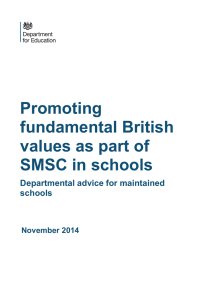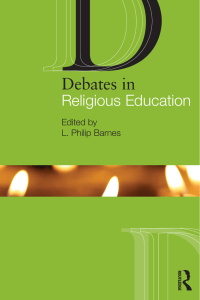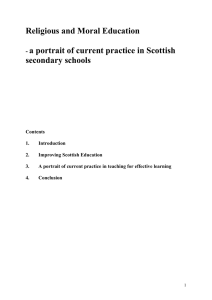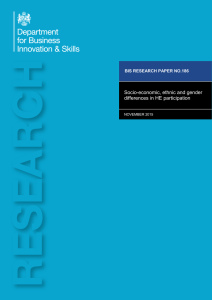Evaluating pupils’ spiritual, moral, social and cultural (SMSC) development
advertisement
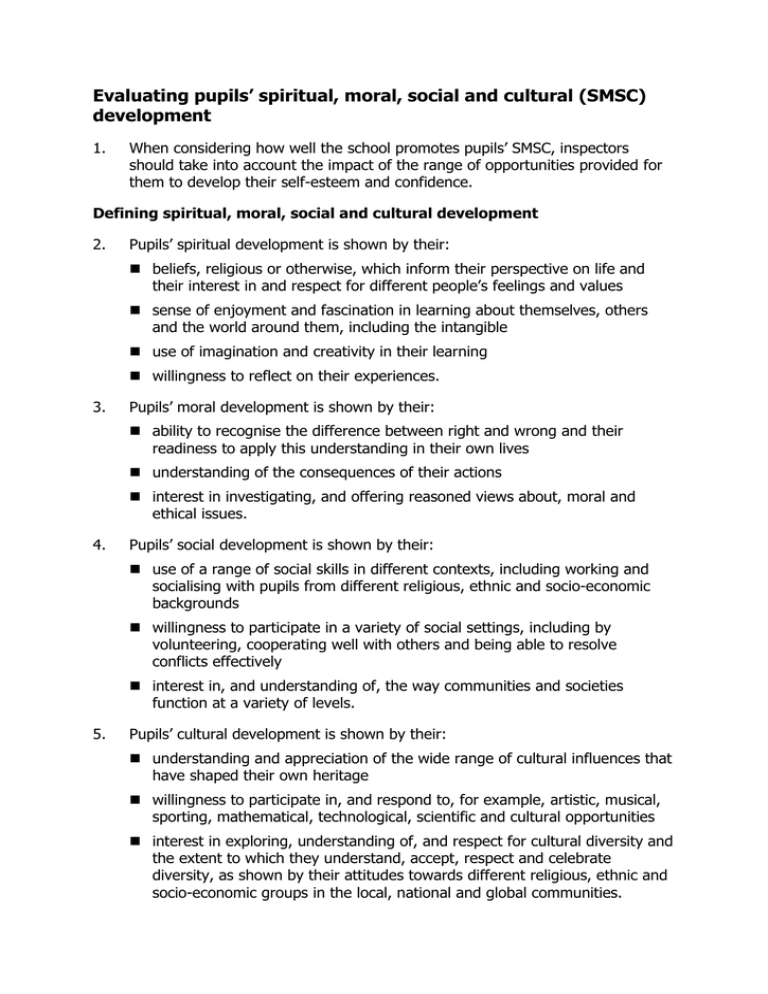
Evaluating pupils’ spiritual, moral, social and cultural (SMSC) development 1. When considering how well the school promotes pupils’ SMSC, inspectors should take into account the impact of the range of opportunities provided for them to develop their self-esteem and confidence. Defining spiritual, moral, social and cultural development 2. Pupils’ spiritual development is shown by their: beliefs, religious or otherwise, which inform their perspective on life and their interest in and respect for different people’s feelings and values sense of enjoyment and fascination in learning about themselves, others and the world around them, including the intangible use of imagination and creativity in their learning willingness to reflect on their experiences. 3. Pupils’ moral development is shown by their: ability to recognise the difference between right and wrong and their readiness to apply this understanding in their own lives understanding of the consequences of their actions interest in investigating, and offering reasoned views about, moral and ethical issues. 4. Pupils’ social development is shown by their: use of a range of social skills in different contexts, including working and socialising with pupils from different religious, ethnic and socio-economic backgrounds willingness to participate in a variety of social settings, including by volunteering, cooperating well with others and being able to resolve conflicts effectively interest in, and understanding of, the way communities and societies function at a variety of levels. 5. Pupils’ cultural development is shown by their: understanding and appreciation of the wide range of cultural influences that have shaped their own heritage willingness to participate in, and respond to, for example, artistic, musical, sporting, mathematical, technological, scientific and cultural opportunities interest in exploring, understanding of, and respect for cultural diversity and the extent to which they understand, accept, respect and celebrate diversity, as shown by their attitudes towards different religious, ethnic and socio-economic groups in the local, national and global communities.



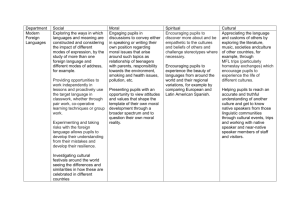

![afl_mat[1]](http://s2.studylib.net/store/data/005387843_1-8371eaaba182de7da429cb4369cd28fc-300x300.png)

